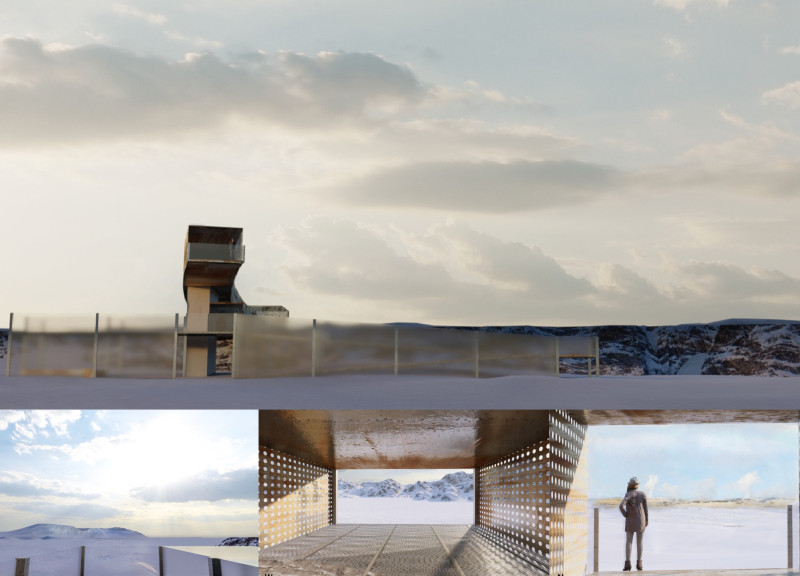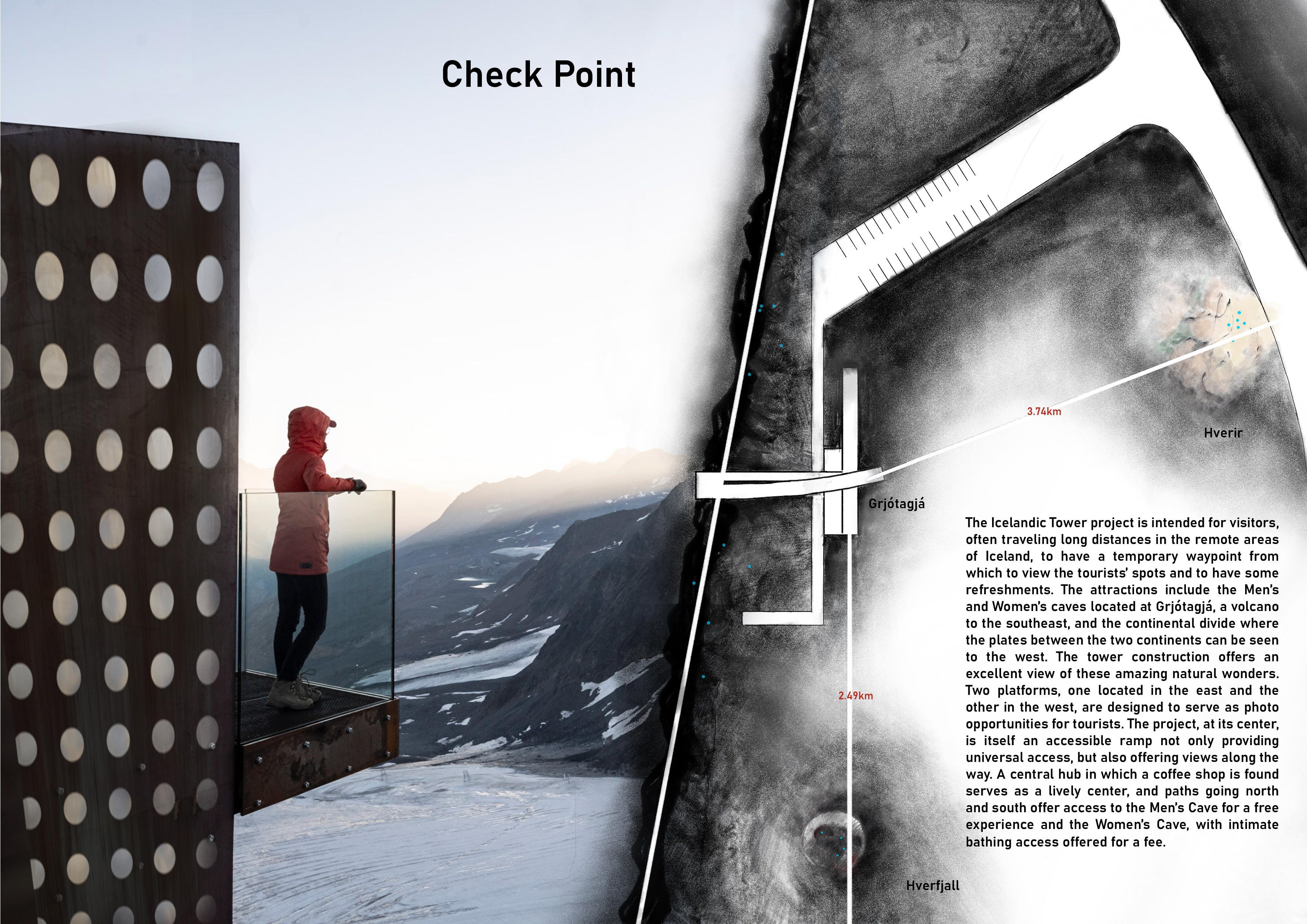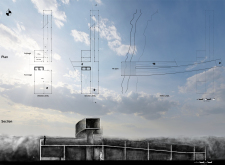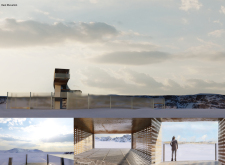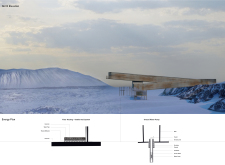5 key facts about this project
The structure is organized across several levels, where different functionalities are carefully delineated. The ground level accommodates an information desk and café, establishing a welcoming entry point. The subsequent levels are dedicated to observation and exploration, designed to maximize views of Iceland’s striking geological features. The upper tiers offer platforms for panoramic observation, allowing visitors to appreciate the diverse landscape of mountains, valleys, and geothermal formations.
Unique Design Approaches
The Icelandic Tower is distinguished by its architectural form and materiality. The structure employs a combination of concrete, glass, and perforated metal panels. Concrete is utilized for its structural integrity and ability to withstand the region's harsh weather conditions. It is paired with tempered glass to create expansive views, promoting transparency and a connection with the natural surroundings. The use of perforated metal panels introduces a tactile quality that allows for filtered light and views while maintaining structural support. This choice not only enhances the aesthetic appeal but also aligns with principles of sustainable architecture.
A notable aspect of this project is its responsive design to the local climate. The incorporation of geothermal systems for heating demonstrates an investment in environmental stewardship and energy efficiency. This feature underlines the project’s commitment to sustainability while providing comfort for visitors during colder months. Accessibility is also a key consideration; the design includes ramps and thoughtful circulation paths, ensuring ease of movement throughout the tower.
Integration with the Landscape
The Icelandic Tower embraces its geographical context, drawing inspiration from the natural landscape of Iceland. Its observation platforms are strategically positioned to frame views of iconic features, creating a sense of culmination in the visitor experience. The design narrative speaks to the essence of Iceland’s geography, converting the act of observation into an enjoyable journey that celebrates the natural environment.
For those interested in a deeper understanding of this project, further exploration of the architectural plans, architectural sections, and architectural designs will provide essential insights into the nuances of its design and functionality. The Icelandic Tower stands as a contemporary example of how architecture can thoughtfully reflect and enhance its natural context.


